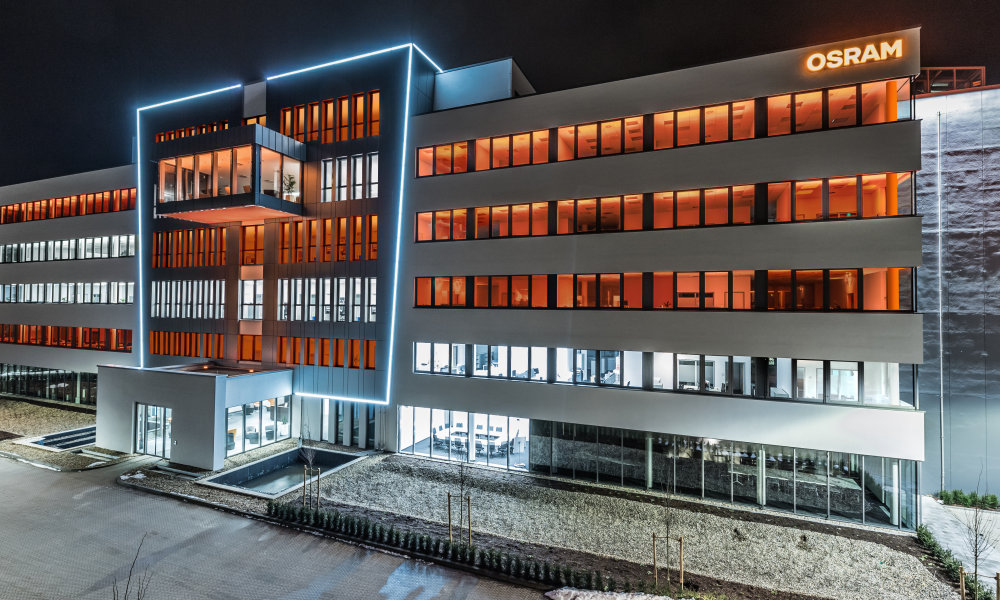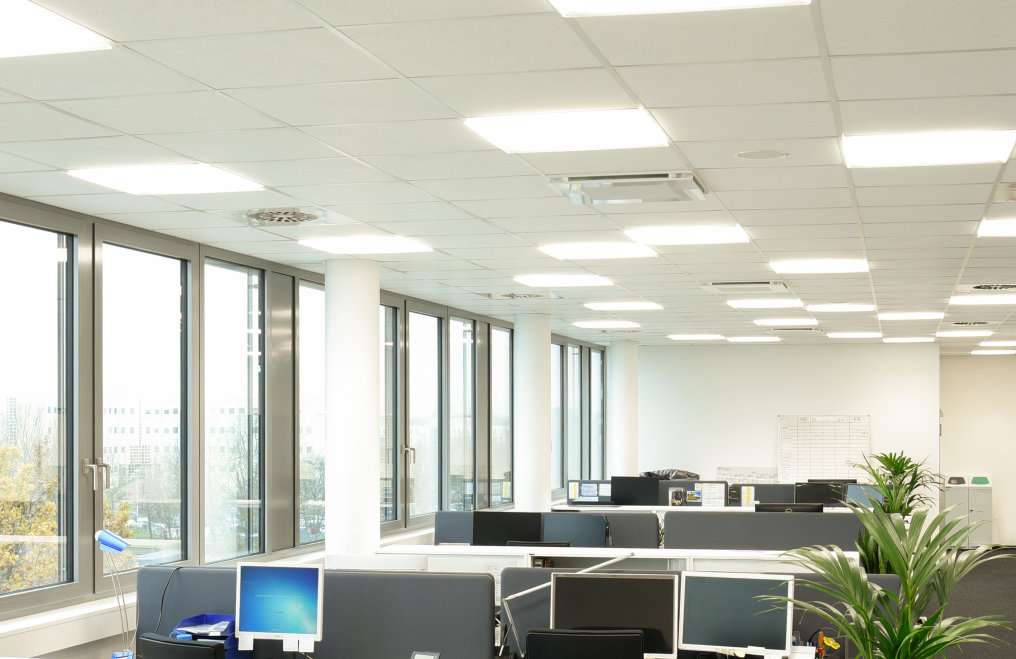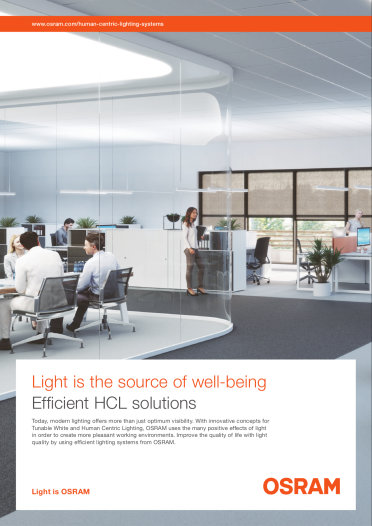Human Centric Lighting (HCL)
“Lighting specifically designed to produce a beneficial physiological and/or psychological effect upon humans.“
Human Centric Lighting (HCL) supports human health, well-being and performance through deterministic and holistic planning and implementation of the visual, emotional and, in particular, biological effects of light.
The predominant focus of human centric lighting is the needs of a human being of their living, leisure, and work environments. The interdisciplinary balance between the parameters of artificial lighting, natural daylight, architecture and technology creates the right light at the right time for each use.
10 principles of HCL design
Due to evolution, daylight is our most important synchronizer. Daylight provides the highest quality of light regarding the spectral distribution and color quality in the visible spectrum, and in the non-visible spectrum daylight contains many health-promoting components. As far as possible, use natural daylight in the concept stage of lighting design. Also keep in mind that possible disruptive effects such as glare or excessive exposure to heat due to direct sunlight should be avoided.
Design the lighting solution for both visual and non-visual perception. Dynamic lighting is biologically effective especially in the morning following darkness, and warm white evening light supports relaxation and has "calming down" features.
Recommend your customers using the right light at the right time also at home. The impact of all light sources should be considered if possible, including those sources not directly intended for lighting such as computer screens.
Apply the light only to where it is needed and is required for well-being.
HCL is not required for infrequently used areas, but rather for areas where people stay for a longer period of time. Integrate a sensible, dynamic light management system, utilize daylight resources, integrate yourself actively into the interior design. If possible check whether the light management system can be connected to the existing building system technology. Attempt to sensitize the user for the conscious handling of light.
For whom is the lighting solution intended and which user-specific information must be considered during design and planning? When do the first and last people come to the place of work (chronotypes)? The lighting solution should positively influence spatial perception. Also, older people need more light than younger people.
Plan light appropriate for the material – the lighting solution must become part of the architecture and support it. Divide the area into zones and guide with light, design and display with light, create a sense tension between light and shadow, and consider the visual effects of light. Keep in mind that surfaces absorb light and only partly reflect it.
Since melanopic effects are mainly communicated via blue light, strong colors leaning more towards red, brown and yellow dramatically reduce the effect because they absorb blue.
With all HCL lighting concepts a focus is placed on illumination of workplaces conforming to appropriate standards – relevant regional rules and regulations for lighting provide information about this. Based upon this, activating concepts are then implemented. For recommendations about correctly designing with biologically active light, see for example the DIN SPEC 67600 and DIN Spec 5031-100.
Be aware of the quality of light contained in daylight. Design wide-area light (with either wide distribution indirect light or light ceilings) for cool white illumination across the day akin to the sky, and warm white light to simulate the lighting quality of the sun. During evenings use task-oriented light to sufficiently brighten walls or ceilings and avoid a cave-like character and to keep the melanopic impact as low as possible.
Think of daylight and the local and time-based distribution of warm and cool white light colors and brightness levels.Design cool light colors with high illuminance and warm white light colors with low brightness – cool white light instigates biological activation and warm white light has a positive influence on relaxation and calming down.
The natural course of light during the day is the conceptual model. In addition, circadian-based light sequences support people's daytime rhythm and brief "showers of light" contribute to activation at specific times.
Design with pendant luminaires that emit light both directly and indirectly. Implement wide-area, cool or dynamic white lighting for walls and ceilings with wallwashers, floorstanding luminaires or light ceilings. Use downlights or spotlights for warm white accent light, always select a solution integrating a combination of dynamic light management and luminaires to implement an optimum HCL design approach. Also, it is very important to use components with verified melanopic data.
Cases
Find out where OSRAM components are in use

Light creates quality of life
Intelligent LED Human Centric Lighting (HCL) concept for Osram Opto Semiconductors in Regensburg
The intelligent control concept with its e:cue Sympholight light management system features intuitive and user-friendly system operation. Light curves are programmed in for each day of the year according to the time of day and year. Around 350 brightness- and presence sensors also detect the current ingress of daylight and presence of employees, enabling the preprogrammed light...
Find out how OSRAM Regensburg presents itself as an attractive emloyer for the region
Biologically effective light to push the concentration
OSRAM supports BMW M Motorsport at legendary race in France
As an official BMW M Motorsport partner, OSRAM provided biologically effective lighting for racing drivers and their teams both before and during the race, enhancing their alertness and boosting their concentration. At this year´s race in France, the special lighting has once again made a decisive difference. The cars have raced into the night with innovative OSRAM technology...
Find out how BMW Motorsport drivers improve their performance with OSRAM
Biologically effective light for World Cup night race
OSRAM boosts the stars of German Ski Association
Light and its proven activating effect improves performance and reactions, reduces the effects of jet lag after long journeys and provides better quality sleep. In cooperation with Osram, the DSV is making these opportunities immediately available to its athletes. The biologically effective light was used for the first...
Find out how HCL boosted the fitness levels of sportsmen
Double accolade at the 2019 German Innovation Awards
OSRAM receives two awards
The high-tech company Osram emerged as winner in two categories at the 2019 German Innovation Awards. Osram received the award in the “Excellence in Business to Business”. Among the latest innovations are intelligent control for data applications and smart building networking, LED drivers for human centric lighting (HCL), durable industrial versions for...
Here is the detailed overview of award winning technologies






